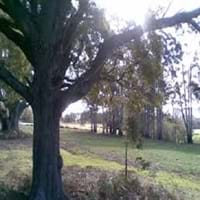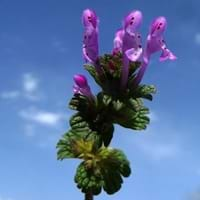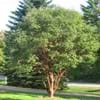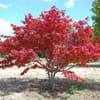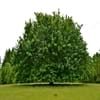Origin
Australia
Eastern Europe, Southern Europe, Mediterranean, Northern Africa, Central Asia, Western Asia
Types
Not Available
Not Available
Habitat
Fertile bottom land, moist forests, Moist Soils, Moist woods, Roadsides, Sandy areas, tropical environments, Tropical rainforest, Tropical regions, Wet lands
Cultivated Beds
USDA Hardiness Zone
8-11
Not Available
AHS Heat Zone
12-10
12 - 1
Sunset Zone
8, 9, 13, 14, 15, 16, 17, 18, 19, 20, 21, 22, 23, 24
Not Available
Habit
Upright/Erect
Prostrate/Trailing
Minimum Height
Not Available
Minimum Width
Not Available
Flower Color
Light Yellow
Hot Pink, Fuchsia, Violet
Flower Color Modifier
Bicolor
Bicolor
Fruit Color
Brown
Not Available
Leaf Color in Spring
Green, Gray Green
Green, Purple, Gray Green
Leaf Color in Summer
Green, Gray Green
Green, Purple, Gray Green
Leaf Color in Fall
Green, Gray Green
Green, Purple, Gray Green
Leaf Color in Winter
Green, Gray Green
Light Green
Leaf Shape
Long Linear
Lobed
Plant Season
Spring, Summer, Fall, Winter
Spring, Fall, Winter
Sunlight
Full Sun
Full Sun, Partial Sun, Partial shade, Full Shade
Type of Soil
Loam, Sand
Clay, Loam, Sand
The pH of Soil
Acidic, Neutral, Alkaline
Acidic, Neutral, Alkaline
Soil Drainage
Well drained
Average
Bloom Time
Spring
Early Spring, Spring, Late Spring, Early Summer, Fall, Late Fall, Early Winter
Tolerances
Drought
Not Available
Where to Plant?
Ground
Ground
How to Plant?
Seedlings
Divison, From Rhizomes, Layering, Seedlings
Plant Maintenance
Medium
Low
Watering Requirements
Average Water Needs
Water occasionally
In Summer
Lots of watering
Lots of watering
In Spring
Moderate
Moderate
In Winter
Average Water
Average Water
Soil pH
Acidic, Neutral, Alkaline
Alkaline, Neutral, Slightly Acidic, Slightly Alkaline
Soil Drainage Capacity
Well drained
Dry
Sun Exposure
Full Sun
Full Sun, Partial shade
Pruning
Remove damaged leaves, Remove dead branches, Remove dead leaves
Remove damaged leaves, Remove dead branches, Remove dead leaves
Fertilizers
All-Purpose Liquid Fertilizer
Not Available
Pests and Diseases
Red blotch
Not Available
Plant Tolerance
Drought
Not Available
Flower Petal Number
Single
Single
Fragrant Bark/Stem
No
Yes
Foliage Texture
Medium
Medium
Foliage Sheen
Matte
Matte
Attracts
Hummingbirds, Butterflies
Bees, pollinators
Allergy
Asthma, Eye irritation, Respiratory problems, Skin irritation
Anti-inflammatory, Antimicrobial, Antioxidants, Flavonoids
Aesthetic Uses
Not Used For Aesthetic Purpose
Beautification, Cottage Garden, Showy Purposes
Beauty Benefits
Not Available
Not Available
Edible Uses
Insignificant
Yes
Environmental Uses
Air purification, Shadow Tree
Not Available
Medicinal Uses
Not Available
Antirheumatic, Diaphoretic, Febrifuge, Laxative
Part of Plant Used
Bark, Tree trunks
Flowers, Leaves, Stem
Other Uses
Application in Furniture, Constructing Boats, Used in Furniture, Wood is used fore making tools
Used As Food
Used As Indoor Plant
No
No
Used As Outdoor Plant
Yes
Yes
Garden Design
Screening / Wind Break, Shade Trees, Street Trees
Edible
Botanical Name
ACACIA melanoxylon
LAMIUM amplexicaule
Common Name
Australian Blackwood, Blackwood
Henbit, Henbit Deadnettle
In Hindi
काली लकड़ी
henbit deadnettle
In German
Schwarzes Holz
henbit deadnettle
In French
Bois noir
henbit deadnettle
In Spanish
Blackwood
deadnettle henbit
In Greek
Μαυρο ξυλο
αυλακόχορτου deadnettle
In Portuguese
Madeira preta
henbit deadnettle
In Polish
Czarne drewno
Henbit jasnota
In Latin
Press
henbit deadnettle
Phylum
Magnoliophyta
Magnoliophyta
Class
Magnoliopsida
Magnoliopsida
Family
Fabaceae
Lamiaceae
Clade
Angiosperms, Eudicots, Rosids
Angiosperms, Asterids, Eudicots
Tribe
Acacieae
Not Available
Subfamily
Not Available
Not Available
Season and Care of Blackwood and Henbit Deadnettle
Season and care of Blackwood and Henbit Deadnettle is important to know. While considering everything about Blackwood and Henbit Deadnettle Care, growing season is an essential factor. Blackwood season is Spring, Summer, Fall and Winter and Henbit Deadnettle season is Spring, Summer, Fall and Winter. The type of soil for Blackwood is Loam, Sand and for Henbit Deadnettle is Clay, Loam, Sand while the PH of soil for Blackwood is Acidic, Neutral, Alkaline and for Henbit Deadnettle is Acidic, Neutral, Alkaline.
Blackwood and Henbit Deadnettle Physical Information
Blackwood and Henbit Deadnettle physical information is very important for comparison. Blackwood height is Not Available and width Not Available whereas Henbit Deadnettle height is 7.60 cm and width 30.50 cm. The color specification of Blackwood and Henbit Deadnettle are as follows:
Blackwood flower color: Light Yellow
Blackwood leaf color: Green and Gray Green
Henbit Deadnettle flower color: Hot Pink, Fuchsia and Violet
- Henbit Deadnettle leaf color: Green, Purple and Gray Green
Care of Blackwood and Henbit Deadnettle
Care of Blackwood and Henbit Deadnettle include pruning, fertilizers, watering etc. Blackwood pruning is done Remove damaged leaves, Remove dead branches and Remove dead leaves and Henbit Deadnettle pruning is done Remove damaged leaves, Remove dead branches and Remove dead leaves. In summer Blackwood needs Lots of watering and in winter, it needs Average Water. Whereas, in summer Henbit Deadnettle needs Lots of watering and in winter, it needs Average Water.
